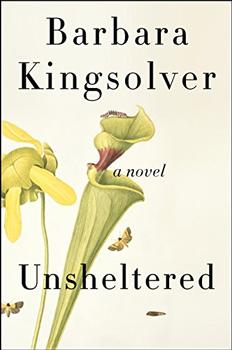What do the living spaces in their various conditions throughout the novel suggest about the people living in them? Figuratively speaking, which foundations turn out to be solid, or precarious?

 What do the living spaces throughout the...
What do the living spaces throughout the...
Created: 10/16/18
Replies: 3
Join Date: 10/15/10
Posts: 3442
What do the living spaces in their various conditions throughout the novel suggest about the people living in them? Figuratively speaking, which foundations turn out to be solid, or precarious?
Join Date: 04/21/11
Posts: 264
I loved the metaphor of the crumbling house and how its shoddy mechanics were at the heart of much activity for the two families. In Thatcher Greenwood's case, his wife seemed preoccupied with the cosmetic inadequacies where he focused on the structural, consistent with their personalities. In the case of Willa and her husband, I found it interesting that he pretty much left all the house worrying to her, seeming oblivious that it was basically crashing down around them. In the end, they had to raze the house which seemed to symbolize that sometimes we need to tear down the current world order to make room for a newer more sensible and sturdy one.
Join Date: 02/05/16
Posts: 381
I agree, paulak. And the razing suggests also that it's not by buildings we shelter ourselves, but through our healthy relationships with others and with Mother Earth.
The only foundations that are stable in this novel are those relationships built upon mutual respect, love (not necessarily romantic) and open minds. Thatcher finds these in his relationship with Mary Treat (whom, it's suggested at the end of the novel, he has come to love), but also his friendship with young Polly, and with Carruth. Sadly, not in his marriage to Rose. Willa finds these relationships with her husband, her son and ultimately with Tig, as well as museum director Christopher Hawk. And through Tig, we see her coming to develop a relationship with Jorge and his family as well, the people she had looked down on before. This makes her more like Mary Treat, with her mentorship of her maid Selma -- pointing to the essential equality of all people, which needs to be part of the future we build for survival.
Join Date: 02/15/17
Posts: 16
The living spaces are unstable. I agree with JLPen77 that the only stable foundations are those relationships built on mutual respect. These crumbling spaces relate to the title "Unsheltered". The family relationships are in turmoil: Thatcher and Rose, Zeke with the loss of his wife and ultimately his child, Willa and Iano with their jobs and financial security and a crumbling house, Nick with his immobility and isolation. These deteriorating "shelters" allow the characters to find solutions to their turmoil. Mary Treat tells Thatcher in Chapter 8 that he must "lead his pupils out of doors." "To stand in the clear light of day...Unsheltered" In other words if we are unsheltered (uncared for) we find solutions to live and move on. We progress. This chapter emphasizes the idea that if you want to remain where you are, stay put - "shelter in place" as we are advised during danger.
Reply
Please login to post a response.